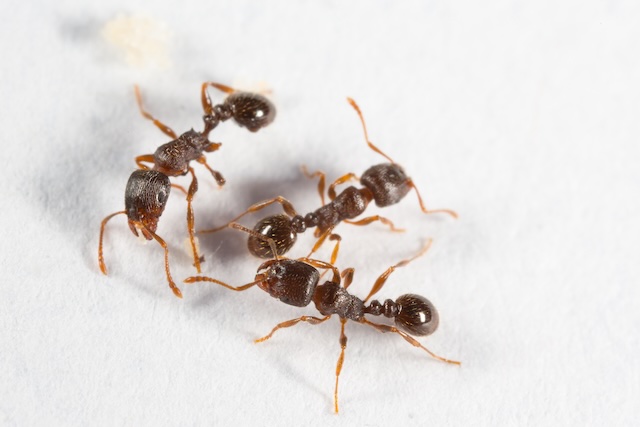Carpenter ants are a special kind of pest for homeowners because they can damage wooden buildings. To protect your home, you need to know about these wood-destroying ants and take preventative steps. In this guide, we’ll learn all about carpenter ants, including what they do, how they can hurt you, and the best ways to keep them away.
A Brief Look at the Carpenter Ant Puzzle
Carpenter ants, which are in the group Camponotini, are not like other ants that you might find in your home. They don’t eat wood like termites do; instead, they dig holes in it to make homes. These big ants are usually black, red, or a mix of the two. They are 6 to 13 millimetres long. If you see them in or near your home, you should pay attention right away.
How to Identify and Characterize
The first thing you need to do to protect your home from carpenter ants is to recognize them. They come in different sizes and colours, but all of them have one sharp node between their chest and stomach. Swarmers, which are winged reproductive ants, are often the first sign that a colony is fully grown.
Knowing the difference between worker ants and swarmers can help you figure out how bad the problem is. Worker ants build and take care of nests, but swarmers are a sign of a colony that is well-established and may be fully grown.
Behaviour and How They Nest
Carpenter ants like wood that is damp, so you can often find them in places where water damage has happened. Decaying trees, tree roots, and wooden buildings are all common places for birds to nest. They can make their homes in attics, crawlspaces, and holes in the walls.
Carpenter ants look for food at night because they are nocturnal animals. They are especially interested in proteins, sweet things, and other bugs. Knowing what they like to eat helps you come up with specific ways to get rid of pests.
The Danger to the Structure of Your Home
Carpenter ants are more dangerous than sidewalk ants because they can damage your home’s structure. When they dig into wood, it makes it less stable, which could cause serious damage over time. Ignoring a carpenter ant problem can lead to expensive fixes and make your home less safe.
Strategies That Work for Homeowners
Stopping moisture: Fix any water leaks right away because carpenter ants are drawn to wood that has been damaged by water. Make sure that crawlspaces and attics have enough air flow.
Regularly check the wooden parts of your home and the area around it for signs of damage. Wood that sounds hollow or is discoloured could be an indication of a carpenter ant invasion.
Landscaping Tips: Cut back trees and plants that grow close to your house so that carpenter ants can’t get to it directly. Quickly cut down any trees that are dead or dying.
Sealing Entry Points: To keep carpenter ants out, seal any cracks, gaps, or spaces on the outside of your home. Pay close attention to the places in your home where utilities come in.
Professional Help: If you think or know for sure that you have a carpenter ant problem, you should get professional pest control services. Experts can find eggs, figure out how bad the problem is, and treat the problem specifically.
To keep carpenter ants out of your home, you need to be aware of them, take steps to stop them, and, if necessary, call a professional. Carpenter ants can damage people’s homes, but homeowners can keep them from doing so by learning how they act, spotting possible problems, and taking preventative steps.
